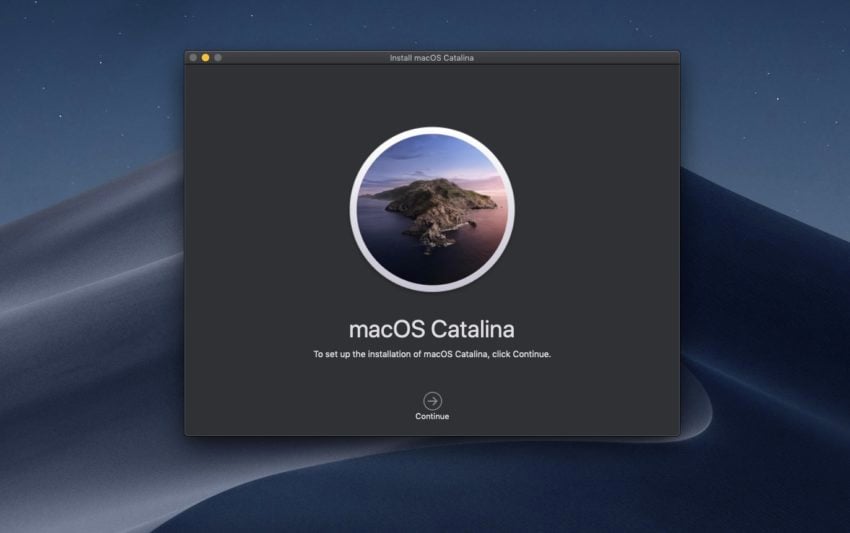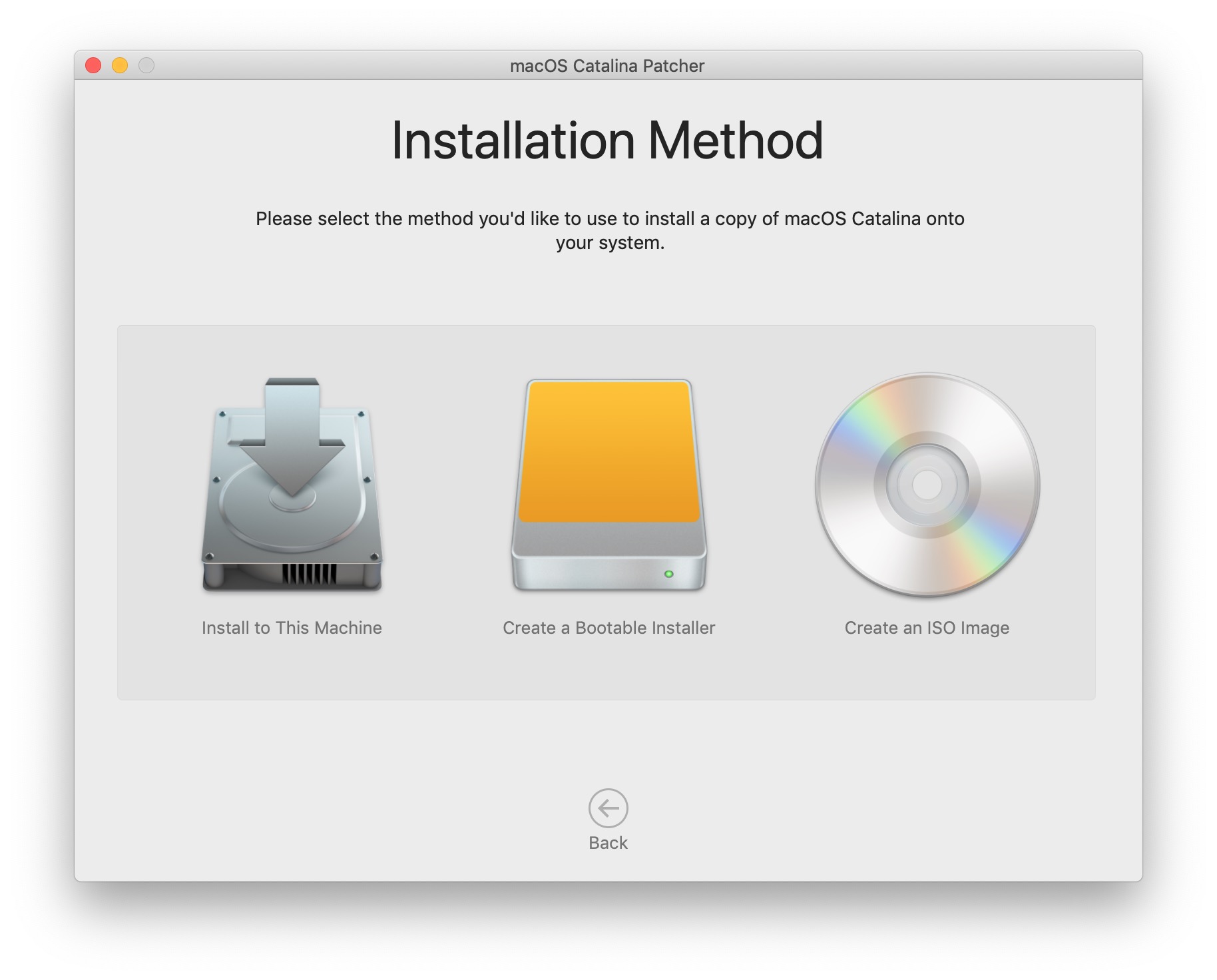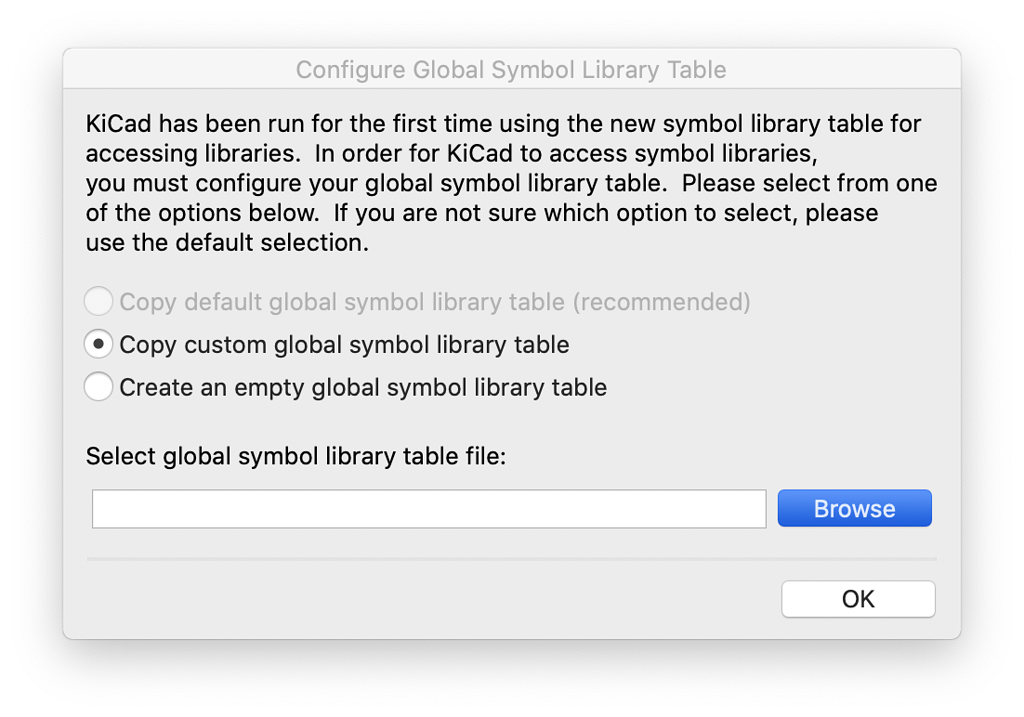Just to report my experience - after leaving my Mac at 'calculating time remaining' for 5 hours, i went to bed. Woke up 7 hours later to find a nice, happy Catalina login screen. So be patient and your upgrade will probably go OK. And to answer my own question, hopefully without angering Allan Eckert, when the upgrader appears to be stuck for. The macOS Catalina installation should take about 20 to 50 minutes if everything works right. This includes a speedy download and a simple install with no issues or errors. Best case, you can.
So, you’ve decided to download an older version of Mac OS X. There are many reasons that could point you to this radical decision. To begin with, some of your apps may not be working properly (or simply crash) on newer operating systems. Also, you may have noticed your Mac’s performance went down right after the last update. Finally, if you want to run a parallel copy of Mac OS X on a virtual machine, you too will need a working installation file of an older Mac OS X. Further down we’ll explain where to get one and what problems you may face down the road.
A list of all Mac OS X versions
We’ll be repeatedly referring to these Apple OS versions below, so it’s good to know the basic macOS timeline.
Follow these steps to download Catalina (or any other version of macOS) from the Mac App Store: Click this link to open the Mac App Store on the Catalina page.; Click on Get. Software Update will. Unclear to me how to upgrade to catalina (10.15.3), as the installer says “Install a new version of the OS” (or similar) as opposed to “upgrade or install new” from the normal installers.
| Cheetah 10.0 | Puma 10.1 | Jaguar 10.2 |
| Panther 10.3 | Tiger 10.4 | Leopard 10.5 |
| Snow Leopard 10.6 | Lion 10.7 | Mountain Lion 10.8 |
| Mavericks 10.9 | Yosemite 10.10 | El Capitan 10.11 |
| Sierra 10.12 | High Sierra 10.13 | Mojave 10.14 |
| Catalina 10.15 |
STEP 1. Prepare your Mac for installation
Given your Mac isn’t new and is filled with data, you will probably need enough free space on your Mac. This includes not just space for the OS itself but also space for other applications and your user data. One more argument is that the free space on your disk translates into virtual memory so your apps have “fuel” to operate on. The chart below tells you how much free space is needed.
Note, that it is recommended that you install OS on a clean drive. Next, you will need enough disk space available, for example, to create Recovery Partition. Here are some ideas to free up space on your drive:
- Uninstall large unused apps
- Empty Trash Bin and Downloads
- Locate the biggest files on your computer:
Go to Finder > All My Files > Arrange by size
Then you can move your space hoggers onto an external drive or a cloud storage.
If you aren’t comfortable with cleaning the Mac manually, there are some nice automatic “room cleaners”. Our favorite is CleanMyMac as it’s most simple to use of all. It deletes system junk, old broken apps, and the rest of hidden junk on your drive.
Download CleanMyMac for OS 10.4 - 10.8 (free version)
Download CleanMyMac for OS 10.9 (free version)
Download CleanMyMac for OS 10.10 - 10.14 (free version)
STEP 2. Get a copy of Mac OS X download
Normally, it is assumed that updating OS is a one-way road. That’s why going back to a past Apple OS version is problematic. The main challenge is to download the OS installation file itself, because your Mac may already be running a newer version. If you succeed in downloading the OS installation, your next step is to create a bootable USB or DVD and then reinstall the OS on your computer.

How to download older Mac OS X versions via the App Store
If you once had purchased an old version of Mac OS X from the App Store, open it and go to the Purchased tab. There you’ll find all the installers you can download. However, it doesn’t always work that way. The purchased section lists only those operating systems that you had downloaded in the past. But here is the path to check it:

- Click the App Store icon.
- Click Purchases in the top menu.
- Scroll down to find the preferred OS X version.
- Click Download.
This method allows you to download Mavericks and Yosemite by logging with your Apple ID — only if you previously downloaded them from the Mac App Store.
Without App Store: Download Mac OS version as Apple Developer
If you are signed with an Apple Developer account, you can get access to products that are no longer listed on the App Store. If you desperately need a lower OS X version build, consider creating a new Developer account among other options. The membership cost is $99/year and provides a bunch of perks unavailable to ordinary users.
Nevertheless, keep in mind that if you visit developer.apple.com/downloads, you can only find 10.3-10.6 OS X operating systems there. Newer versions are not available because starting Mac OS X Snow Leopard 10.7, the App Store has become the only source of updating Apple OS versions.
Purchase an older version of Mac operating system
Macos Catalina Install Timeline
You can purchase a boxed or email version of past Mac OS X directly from Apple. Both will cost you around $20. For the reason of being rather antiquated, Snow Leopard and earlier Apple versions can only be installed from DVD.
Buy a boxed edition of Snow Leopard 10.6
Get an email copy of Lion 10.7
Get an email copy of Mountain Lion 10.8
The email edition comes with a special download code you can use for the Mac App Store. Note, that to install the Lion or Mountain Lion, your Mac needs to be running Snow Leopard so you can install the newer OS on top of it.
Os Catalina Install Time
How to get macOS El Capitan download
If you are wondering if you can run El Capitan on an older Mac, rejoice as it’s possible too. But before your Mac can run El Capitan it has to be updated to OS X 10.6.8. So, here are main steps you should take:
1. Install Snow Leopard from install DVD.
2. Update to 10.6.8 using Software Update.
3. Download El Capitan here.
“I can’t download an old version of Mac OS X”
If you have a newer Mac, there is no physical option to install Mac OS versions older than your current Mac model. For instance, if your MacBook was released in 2014, don’t expect it to run any OS released prior of that time, because older Apple OS versions simply do not include hardware drivers for your Mac.

But as it often happens, workarounds are possible. There is still a chance to download the installation file if you have an access to a Mac (or virtual machine) running that operating system. For example, to get an installer for Lion, you may ask a friend who has Lion-operated Mac or, once again, set up a virtual machine running Lion. Then you will need to prepare an external drive to download the installation file using OS X Utilities.
After you’ve completed the download, the installer should launch automatically, but you can click Cancel and copy the file you need. Below is the detailed instruction how to do it.
STEP 3. Install older OS X onto an external drive
The following method allows you to download Mac OS X Lion, Mountain Lion, and Mavericks.
- Start your Mac holding down Command + R.
- Prepare a clean external drive (at least 10 GB of storage).
- Within OS X Utilities, choose Reinstall OS X.
- Select external drive as a source.
- Enter your Apple ID.
Now the OS should start downloading automatically onto the external drive. After the download is complete, your Mac will prompt you to do a restart, but at this point, you should completely shut it down. Now that the installation file is “captured” onto your external drive, you can reinstall the OS, this time running the file on your Mac.
- Boot your Mac from your standard drive.
- Connect the external drive.
- Go to external drive > OS X Install Data.
Locate InstallESD.dmg disk image file — this is the file you need to reinstall Lion OS X. The same steps are valid for Mountain Lion and Mavericks.
How to downgrade a Mac running later macOS versions
If your Mac runs macOS Sierra 10.12 or macOS High Sierra 10.13, it is possible to revert it to the previous system if you are not satisfied with the experience. You can do it either with Time Machine or by creating a bootable USB or external drive.
Instruction to downgrade from macOS Sierra
Macos Catalina Installation Failed
Instruction to downgrade from macOS High Sierra
Instruction to downgrade from macOS Mojave
Instruction to downgrade from macOS Catalina
Before you do it, the best advice is to back your Mac up so your most important files stay intact. In addition to that, it makes sense to clean up your Mac from old system junk files and application leftovers. The easiest way to do it is to run CleanMyMac X on your machine (download it for free here).
Os Catalina Install Issues
Visit your local Apple Store to download older OS X version
Install Mac Os Catalina Windows 10
If none of the options to get older OS X worked, pay a visit to nearest local Apple Store. They should have image installations going back to OS Leopard and earlier. You can also ask their assistance to create a bootable USB drive with the installation file. So here you are. We hope this article has helped you to download an old version of Mac OS X. Below are a few more links you may find interesting.
Installing a new macOS version should be fairly straightforward. Simply download the OS update, follow the on-screen prompts, and you should be all set. This trend has started since Cheetah and continues with Catalina.
Even with the easy OS installation process, it’s always a wise idea to know exactly how to do a clean install of macOS. This way, you can easily give your Mac a fresh start in the event that something comes up.
When doing a clean install, the first thing you should do is create a backup of your files. For this, you can use Time Machine or other similar alternatives. As soon as you have a backup, you should be all set to do a clean install of a new macOS version like Catalina.
But it is worth noting that even if you have removed possible backup problems out of your way, there are still installation errors you need to prepare for. Let’s know more about these problems in the succeeding sections.
Pro Tip: Scan your Mac for performance issues, junk files, harmful apps, and security threats
that can cause system issues or slow performance.
Special offer. About Outbyte, uninstall instructions, EULA, Privacy Policy.
Common macOS Catalina Installation Problems
There are many problems you may come across while installing macOS Catalina. These include the following:
1. Compatibility Issues
Not all Macs support Catalina. Only Macs released in 2012 or later are compatible with macOS Catalina. Here is a complete list of Macs that support the latest macOS version:
- 12” MacBook (2015 or later)
- MacBook Air (2012 or later)
- MacBook Pro (2012 or later)
- Mac Mini (2012 or later)
- iMac (2012 or later)
- iMac Pro (2017)
- Mac Pro (2013 or later)
2. Disk Space Problems
To be able to download the macOS Catalina installer, you need to have 6.5 GB of free storage space. However, you have to be aware that the amount of disk space required may vary depending on the type of installation that you are doing: a clean install or an upgrade.
Generally, a macOS Catalina clean install requires 20 GB of storage space. Then again, you will need more to allocate space for other apps and future updates. An upgrade, on the other hand, requires 6.5 GB of free space plus a few more gigabytes for the files the installer will have to copy to the startup disk. For an upgrade, it’s hard to give a rough estimate about the total free space needed as many factors need to be taken into account. But to be safe, make sure you have at least 25 GB of free storage space available.
If you are tight on space and can’t proceed with the installation, you might need to install a reliable tool to get rid of unnecessary files on your Mac. One that we recommend is Outbyte macAries. In just a few clicks, this tool can identify any space hoggers on your system.
3. macOS Catalina Could Not Be Installed
Even on Macs that are fully compatible with Catalina, this problem may be triggered by the wrong Date & Time configuration. Be sure that you have set the correct date and time. Better yet, use the “Set date and time automatically” option.
4. Mac Is Frozen While Installing Catalina
If your Mac is stuck while installing Catalina, there could be many reasons behind it. While some are associated with the software, others are hardware-related. But regardless of what’s causing this problem, we can guarantee you that there is a fix. You’ll know more about it below.
What to Do When Catalina Installation Is Stuck?
Is your Mac stuck in the “Setting up Your Mac” part during Catalina installation? We suggest that you try the fixes below:
1. Restart Your Mac.
Oftentimes, your Mac gets stuck while installing Catalina because there are system processes that simply need to be restarted. All you need to do is simply restart your Mac.
You have three ways to restart your Mac. The first one requires you to press the Power button and select Restart from the list of options. The second one is about pressing the Apple key and hitting Restart. Lastly, to restart your Mac, you can press the CTRL + CMD + Eject combo.
2. Reset the NVRAM and SMC.
The NVRAM and SMC store information required when your Mac starts up. Once any of them becomes corrupted, it can cause your machine to freeze. Though resetting the NVRAM and SMC doesn’t always guarantee fixing the problem, it’s still worth trying as it has worked for some.
Here’s how to reset the NVRAM and SMC of a Mac:
- Turn off your Mac.
- Press and hold the Power button for at least 10 seconds.
- Release it and wait for a few seconds more before restarting your computer.
- If the issue persists, switch off your Mac again.
- Remove the power cord.
- Wait for 15 seconds before reconnecting the power cord.
- Turn on your Mac.
3. Check the Log Screen.
When you’re stuck in the “Setting Up Your Mac” part of the Catalina installation, you might want to check the Log screen. There might be missing files that need to be installed. If it shows nothing is happening, then proceed to the next possible fix.
4. Install the Combo Update Instead.
If you are having problems with installing Catalina, you can visit Apple’s website and download the Combo update. This includes all the important files required to update to the latest macOS. Downloading and installing this Combo update will replace all outdated system files.
5. Seek Help from Experts.
When all else fails, your last resort is to seek help from the experts. Take your Mac to the nearest Apple Center and have it checked by an Apple Genius. If your Mac is still under warranty, then great because this service might not cost you a lot. Otherwise, prepare to spend a few hundred bucks.
If visiting an Apple Center is not a good idea in your case, then you can reach out to Apple’s online support team. Head over to their website, answer a few questions, and you might just be given a quick fix.
Conclusion
Catalina installation issues are inevitable, especially considering that the macOS version is new. Lots of features still need to be checked and improved, and errors may not have been seen by the QA teams. But even if installation issues are common, they should not stop you from trying the features that the new OS has to offer. After all, the developers of the OS are constantly working to improve Catalina and are regularly releasing patches with fixes to commonly reported bugs and errors. As long as you take note of the important details and try out different solutions being shared on forums and blogs, then you should be able to enjoy Catalina the way other Mac users do.
Did you have other issues while installing macOS Catalina? How did you fix them? Leave a comment below!